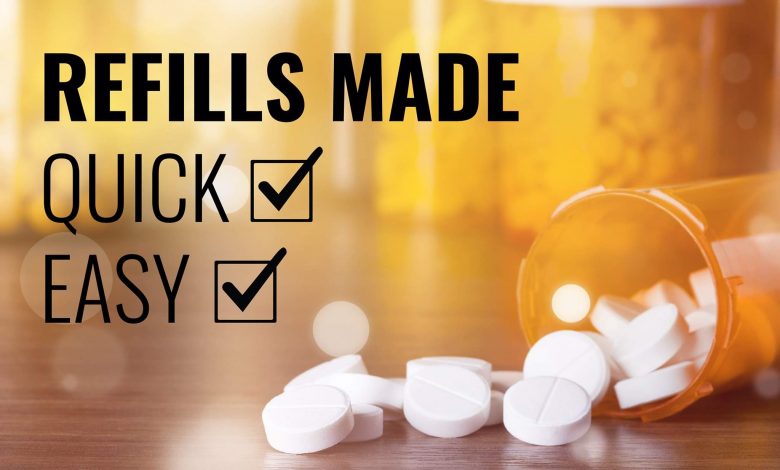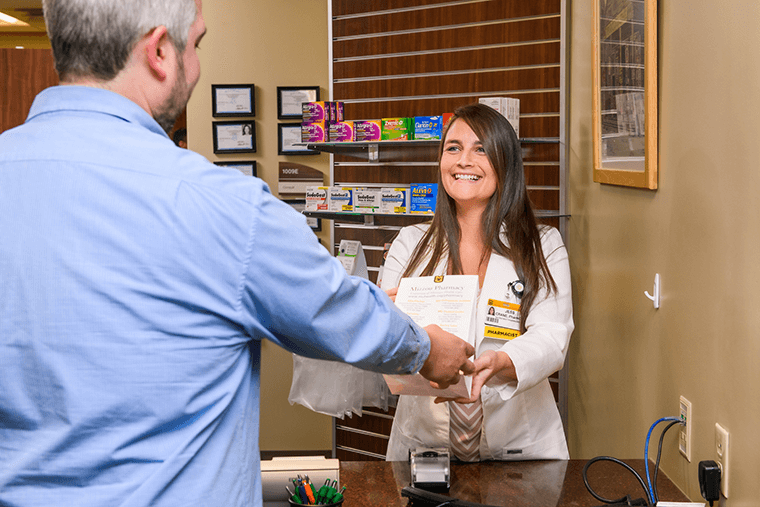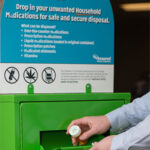Can A Pharmacist Refuse To Fill A Prescription?

What are prescription drugs?
Prescription drugs are often strong medications, which is why they require a prescription from a doctor or dentist. There are three kinds of prescription drugs that are commonly misused:
- Opioids—used to relieve pain
- Depressants—used to relieve anxiety or help a person sleep
- Stimulants— used for treating attention deficit hyperactivity disorder (ADHD)
Prescription drug misuse has become a large public health problem because misuse can lead to addiction and even overdose deaths.
How Prescription Drug matters are handled
Every medication has some risk for harmful effects, sometimes serious ones. Doctors and dentists consider the potential benefits and risks to each patient before prescribing medications and take into account a lot of different factors, described below. When prescription drugs are misused, they can be just as dangerous as drugs that are made illegally.
Personal information. Before prescribing a drug, health providers consider a person’s weight, how long they’ve been prescribed the medication, other medical conditions, and what other medications they are taking. Someone misusing prescription drugs may overload their system or put themselves at risk for dangerous drug interactions that can cause seizures, coma, or even death.
Form and dose. Doctors know how long it takes for a pill or capsule to dissolve in the stomach, release drugs to the blood, and reach the brain. When misused, prescription drugs are sometimes taken in larger amounts or in ways that change the way the drug works in the body and brain, putting the person at greater risk for an overdose. For example, when people who misuse OxyContin® crush and inhale the pills, a dose that normally works over the course of 12 hours hits the central nervous system all at once. This effect increases the risk for addiction and overdose.
Side effects. Prescription drugs are designed to treat a specific illness or condition, but they often affect the body in other ways, some of which can be uncomfortable, and in some cases, dangerous. These are called side effects. Side effects can be worse when prescription drugs are not taken as prescribed or are used in combination with other substances.
What is a prescription refill?
A prescription refill is a process by which one can get a new prescription from a medical provider to get the medications that they are already taking at a pharmacy.
Prescription Refill – Pharmacies
Prescription refills are not usually restricted to specific pharmacies as long as a valid prescription is provided. Examples of pharmacies that enable medication refills as part of their standard processes:
- Walgreens prescription refills
- Walmart prescription refills
- CVS prescription refills
- Rite Aid prescription refills
- Costco prescription refills
Most prescription refills are provided by one’s existing medical provider. Sometimes, one might need a short-term prescription refill from a new medical provider due to the lack of availability of an appointment with one’s regular provider. Another reason might be that the medications have been lost or destroyed. In general, short-term prescription refills can be done at places like a medical clinic, urgent care, or online but they are not a substitute for having a regular doctor or another medical provider who can provide ongoing medical care and management.
Choose the Best Refill Option for You
Has your doctor included refills on your prescription? Check the label. If the label shows a number next to the “refills” section, that’s how many times you can get more of your medicine without going back to see your doctor.
There are several ways to refill your prescription:
• In person. Go to the pharmacy where you originally filled your prescription, request a refill, and either wait for it or come back to pick it up later.
• By phone. Use the pharmacy’s phone number listed on your medicine label to call in your refill. Most large pharmacies or chain stores have automated menus that you can use anytime, day or night (though of course, you’ll have to wait for store hours to pick up your refill). The voice prompts will lead you through the process. At smaller pharmacies, you might speak to the pharmacist or pharmacy technician directly. You also can download smartphone apps that let you refill your prescription without making a phone call.
• Online. If your pharmacy lets you reorder a prescription online, you may still have to go to the store to pick it up.
• By mail. People who take medicine regularly (such as every day to manage a health condition) can sometimes refill prescriptions by mail. This option is convenient because you can often get your medicine in batches (say, a 3-month supply of allergy pills) if your doctor gives you a prescription for that amount. Ask your doctor about this option. If you want to use the mail-order option, plan ahead because it may take up to 2 weeks to get your medicine.
If your prescriptions are covered by health insurance, be sure to tell the pharmacy if your insurance has changed since you last filled your prescription. If you’re not sure about the cost of your medicine or the co-pay, ask so you don’t get an unexpected surprise. Some health insurance programs have specific instructions on how and where you can fill your prescriptions.
Use the Label
No matter how you choose to refill a prescription, it will be easier if you have all your prescription information handy. Most of what you need is printed on the label.
The prescription label is usually wrapped around the medicine bottle. In some cases — especially with medicines like eye drops and skin creams — it may be stuck on the outer box instead. Check the box when you first get your prescription so you don’t throw it out by mistake.
What if you know your prescription is refillable but you threw the bottle or carton away? You can call or go in person to the pharmacy where you got the prescription filled and ask them to look it up in their database. They may ask for ID or want to see your prescription card before giving you a refill, so make sure you bring your cards with you, just in case.
Here’s what to look for on the label:
• Pharmacy phone number. This is the number you’ll call to place the refill.
• Prescription number. This number is often shown as “Rx#” on the label. Although a pharmacist can look up your prescription on the computer, the refill process will go a lot faster if you have this number handy as it is the shortcode for your prescription.
• Refills remaining. The prescription label will tell you how many refills you have left. Most labels show a number of refills with a cutoff date. If you refill your prescription before that date, you should be able to place your order with no problem. However, if the label says something like “Refills require authorization” or if your refills have expired, you’ll need to get in touch with the doctor who prescribed the medicine. Sometimes the pharmacy can do that for you, but other times the doctor will want to see you or talk to you before authorizing the pharmacy to refill the prescription.

Can A Pharmacist Refuse To Fill A Prescription?
Yes, a pharmacist can refuse to fill a valid/on-time prescription for a controlled medication on the following grounds:
- The new medication could cause a dangerous interaction
- The prescription is missing information
- The prescription is hard to read
- The pharmacist doesn’t feel comfortable filling the prescription
- The medication needs to be ordered
- The prescription appears to be altered
- The insurance billing system is down.
However, in some states, pharmacists are duty-bound to refill a valid/on-time prescription even if the drug is a controlled substance. The California code outrightly bans pharmacists from refusing to fill prescriptions.
Can a pharmacist red flag you?
A red flag could be indicative of abuse or misuse, over or under compliance, drug-drug interactions, or a “forged or altered prescription.” Such issues would be reviewed and resolved by a pharmacist “before filling any prescription” as part of the “prospective drug use review,” the testimony states.
Can you sue a pharmacist for not filling a prescription?
Boards of Pharmacy: The permit holder/store owner, the pharmacist in charge, the pharmacist who refuses to fill a prescription, and the wholesaler are all licensed by their state’s Board of Pharmacy. A complaint about unprofessional conduct can be filed against each with the appropriate Board of Pharmacy
Make Sure You Don’t Run Out
Probably the trickiest part about refilling a prescription is remembering to check when you’re running low. If you wait until you’ve taken your last pill to place your refill, and for some reason end up having to wait for it, it could be a mere annoyance — or a major ordeal. Missing even one daily dose of some medicines can be dangerous.
On the flip side, if you try to get a jump on things and place refills weeks in advance, your insurance might not cover it. So keep your eye on the bottle and try to time your refill so the pharmacy has a few days to get things ready for you — especially if they’re going to need to contact your doctor.
Talk to the Pharmacist
When you pick up your refill, you’ll probably be asked if you have any questions for the pharmacist. This is a good time to go over how you should be taking the medicine — such as whether you should take it with or without food. If you’re at all unsure about your medicine, ask to see the pharmacist. Most pharmacies ask you to sign a “waiver” if you don’t have questions.
Since you’ve already been taking the medicine for a while, you might have noticed side effects. For example, does your acne cream leave your face red and irritated? Do you notice headaches after using your prescription eye drops? These are all good things to mention to your pharmacist — especially as people can sometimes notice new side effects even after they’ve been taking a medicine for many years.
When you pick up your prescription, let your pharmacist know if you’ve started using any new medicines. Even over-the-counter medicines (like cold medicines) or herbal supplements can sometimes affect how well prescriptions work or interact with prescription medicines to cause health problems.
If the pharmacy seems busy or you don’t want to ask about something personal (like birth control) in front of other people, call and ask to speak to the pharmacist after you leave. Mention that you just refilled your prescription and have questions. No matter how busy they are, pharmacists are eager to help — it’s their job to make sure people take their medicines safely and effectively.





